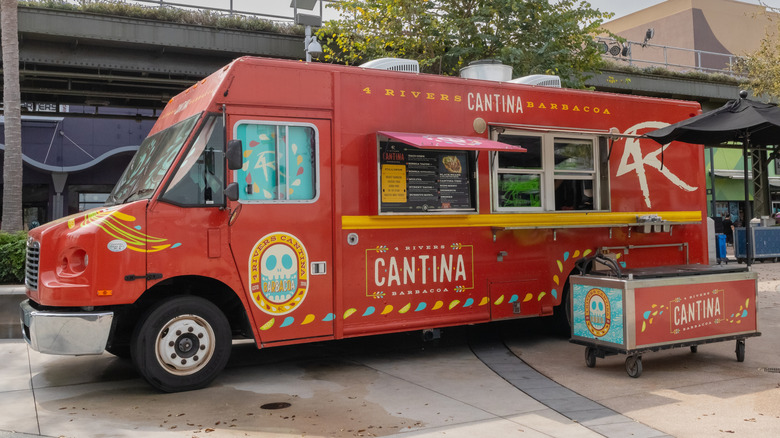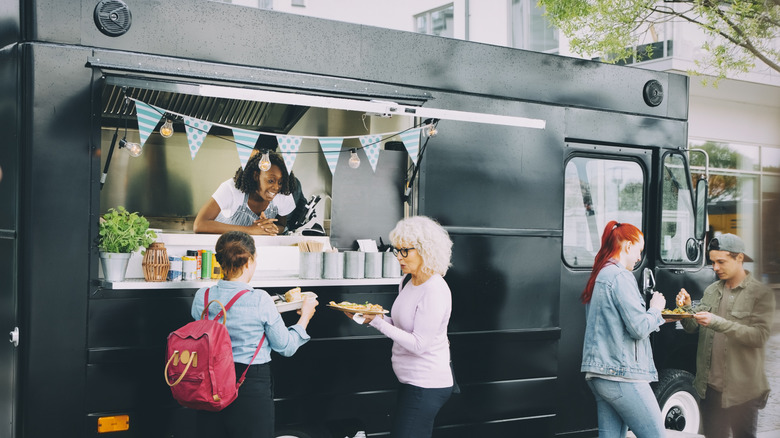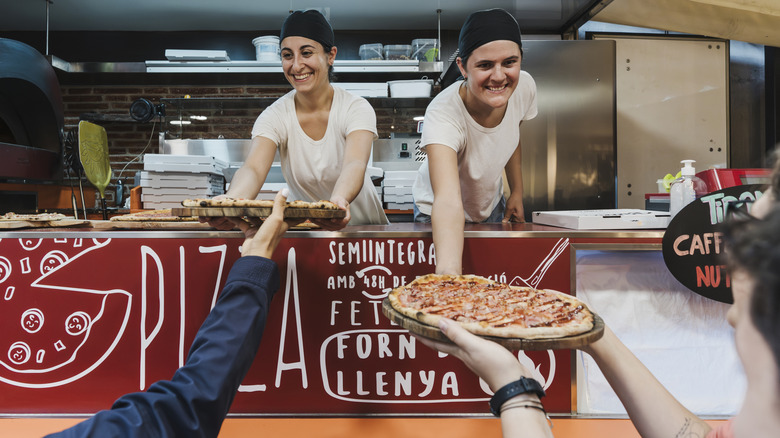The History Of Food Trucks Dates Back Farther Than You'd Think
Before food trucks took over city streets, festival grounds, and late-night cravings, they existed in a much simpler form. The origins of the food truck date all the way back to 1866 when a man named Charles Goodnight retrofitted a U.S. Army wagon into what is now recognized as the very first mobile kitchen because, of course, the very first food trucks weren't trucks at all. These chuckwagons were loaded with dried beans, salted meats, coffee, and even utensils to feed cowboys driving cattle across the vast plains. In essence, they were the original food trucks, minus the hip logos, bright colors, and fusion tacos. Fast forward a century and a half, and food trucks have gone from rugged survival tools to hubs of culinary creativity.
Food trucks today may be more about handling the spike in business at Austin's most popular festivals, but their roots in convenience and portability remain. It's hard to believe that the vibrant, Instagram-worthy trucks we know today began as unassuming wagons on the Texas frontier. So, how exactly did these wagons evolve into the bustling food truck scene of today? Let's roll back the clock to explore how innovation (and a little hunger) paved the way for this cultural icon.
From cowboys to cities
The chuckwagon wasn't just a kitchen; it was the beating heart of cattle drives. Charles Goodnight equipped his wagon with shelving, storage, and a fold-out prep table, effectively inventing the concept of mobile dining. As cities expanded in the late 19th century, the chuckwagon-inspired lunch wagons became a staple in urban areas. Entrepreneurs began parking carts outside factories and construction sites to feed the growing workforce. These carts didn't just offer meals; they represented an opportunity for workers to grab a quick, hearty, and affordable bite without leaving their posts.
By the early 20th century, motorized vehicles began replacing horse-drawn carts, and mobile dining took a huge leap forward. Cities like New York and Los Angeles became hubs for this portable food revolution. Trucks selling tacos, hot dogs, and sandwiches became fixtures in the urban landscape, offering cheap, convenient meals to locals and tourists alike. Just as real-life food truck owners today have fueled both competition and collaboration, the early mobile vendors also vied for coveted spots, forever linking food trucks to community-driven, street-level ingenuity.
The modern food truck renaissance
The food truck as we know it today emerged in the 2000s, thanks to a combination of economic downturns and social media. In the aftermath of the 2008 financial crisis, chefs looking to cut costs embraced trucks as an affordable alternative to brick-and-mortar restaurants. Platforms like Twitter allowed vendors to share locations and menus in real-time, sparking a cultural phenomenon with people following trucks around and waiting impatiently for specific trucks to come back to their area. Today, food trucks serve everything from authentic Korean BBQ to artisanal grilled cheese, rivaling traditional eateries in quality and creativity.
These mobile kitchens are now a staple at music festivals, weddings, and even corporate events. In cities like Austin, they're celebrated as culinary pioneers, offering dishes you won't find anywhere else. But as popular as food trucks are, they occasionally attract drama, like a hamburger mishap that escalated to headbutts. Despite the occasional clash, food trucks continue to evolve and thrive, embodying the spirit of innovation and accessibility. From their humble beginnings on the prairie to the bustling streets of today, food trucks have proven they're more than a trend; they're a way of life.


